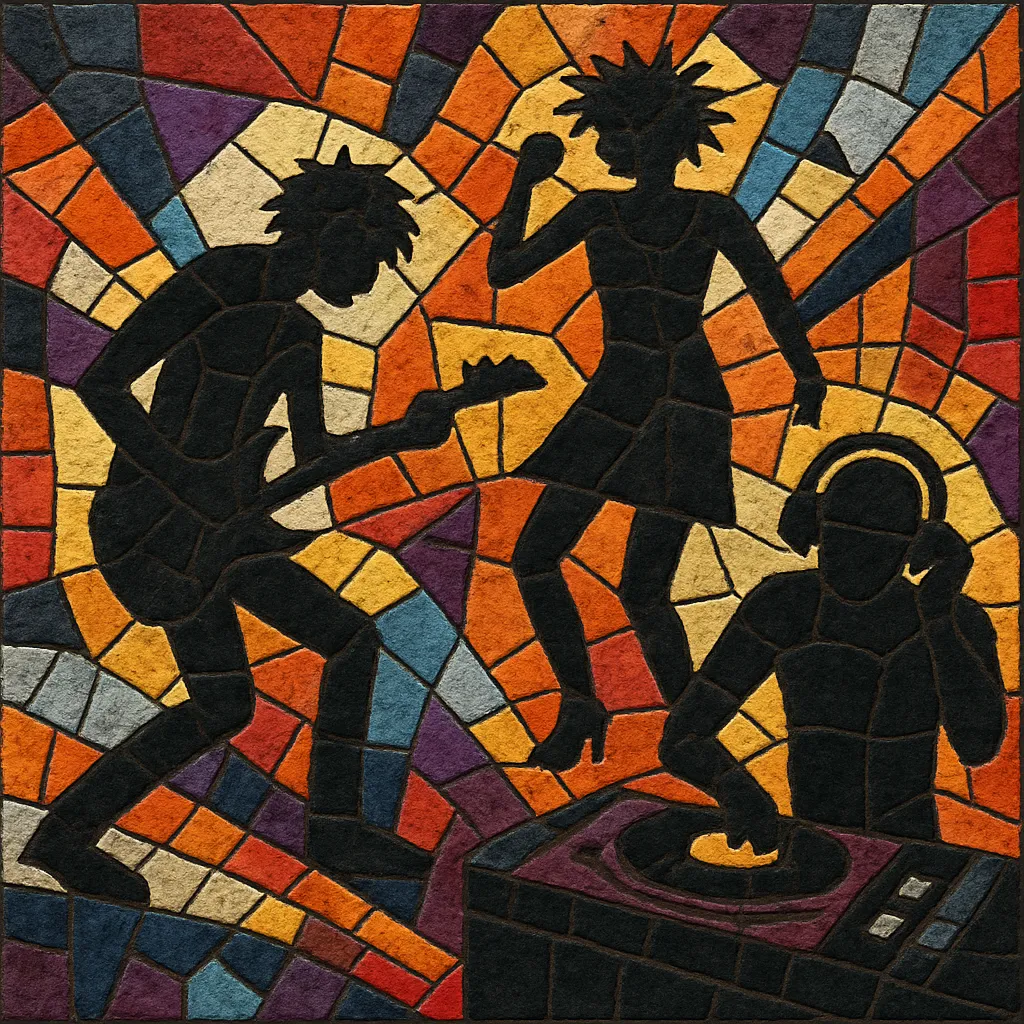Dance-punk revival is a 2000s resurgence of the late-1970s/early-1980s dance-punk aesthetic, recast through indie-rock and contemporary club sensibilities.
It blends punk’s sharp, aggressive guitars and terse, chantable vocals with disco/house rhythms, elastic funk basslines, and percussive accents such as cowbell, claps, and syncopated hi-hats.
Where the original wave drew from no wave and post-punk minimalism, the revival emphasized tighter songcraft, bigger hooks, and production drawing on DJ culture and analog-digital hybrid studios.
The result is nervy, kinetic music designed equally for the live stage and the dance floor, often characterized by four-on-the-floor kick drums, angular riffs, and sardonic, deadpan or shout-sung delivery.
Dance-punk revival traces its roots to the original dance-punk and no wave/post-punk scenes of New York and the UK, where bands like Gang of Four, ESG, and Liquid Liquid fused punk minimalism with funk and disco rhythms. Through the 1990s, these ideas lingered in underground rock and DJ culture, setting the stage for a 2000s resurgence.
Around 2001–2003, New York’s DFA Records (James Murphy and Tim Goldsworthy) catalyzed a new wave. The Rapture’s “House of Jealous Lovers” and LCD Soundsystem’s early singles demonstrated how post-punk guitars could lock into house-style four-on-the-floor and percussive loops. Local peers such as Radio 4 and the relocation-friendly !!! fostered a live-band-meets-DJ-booth ethos that spread quickly across indie circuits.
By the mid-2000s, the sound proliferated on both sides of the Atlantic. In North America, The Faint, Death From Above 1979, Moving Units, and Gossip gave the style different shades of synth grit, bass-forward ferocity, and soulful bite. In the UK, post-punk revivalists such as Franz Ferdinand and Bloc Party emphasized danceable grooves and sharp, syncopated guitar figures, bringing the sound to larger festival audiences and mainstream radio.
As indie scenes intertwined with club culture, dance-punk revival cross-pollinated with electroclash, indietronica, and the neon aesthetics of the "new rave" moment. Even as trends shifted toward electro house and blog-era sounds, the revival’s imprint endured in live band setups designed for dancing, the incorporation of DJ-informed production techniques in rock records, and the normalization of four-on-the-floor within indie rock.
Though less dominant as a tag, the style’s DNA persists in indie dance, nu-disco-flavored bands, and post-punk renewals that privilege groove, repetition, and percussive clarity. Legacy acts continue to tour and release music, while younger groups cite the 2000s wave—and its predecessors—as a blueprint for building dance floors with guitars and drums.
Aim for a steady 4/4 pulse between 115–135 BPM. Use a four-on-the-floor kick pattern, crisp snare on beats two and four, and syncopated hi-hats with occasional open-hat accents. Add auxiliary percussion such as cowbell, claps, and shakers to intensify forward motion.
Write basslines that are tight, repetitive, and often built on octaves or short funk patterns. Keep the bass slightly ahead of the beat to create urgency, and ensure it locks with the kick for a solid dance foundation.
Use angular, staccato guitar riffs built from single-note lines, clipped chords, and rhythmic mutes. Favor bright, slightly overdriven tones with a midrange bite. Complement with minimal synths or organ stabs that reinforce the groove rather than crowding it, drawing on disco/house motifs for hooks.
Keep harmony lean—minor keys, modal touches, and limited chord changes work well. Focus on rhythmic motifs and call-and-response figures. Vocal lines can be chant-like, sardonic, or deadpan, with catchy refrains that land on strong beats.
Structure songs for tension and release: intro groove, verse lock-in, explosive chorus, and a break or drop that spotlights rhythm section or percussion. Use builds with filter sweeps, tom fills, or dropouts to emulate DJ-style dynamics within a live band format.
Blend live-band rawness with dance clarity. Use tight gating and transient shaping on drums, gentle saturation on bass, and parallel compression for punch. Keep the kick and bass centered and prominent, pan guitars and percussion for a wide, energetic image, and leave space for the groove to breathe.


